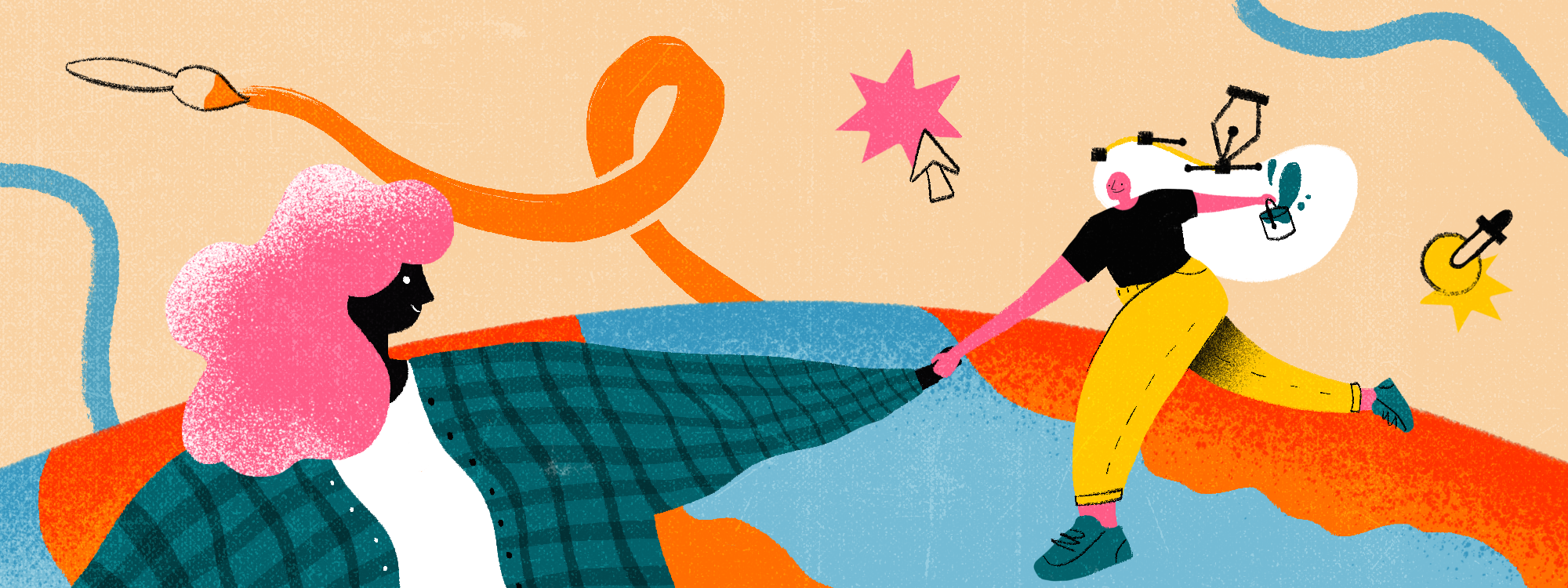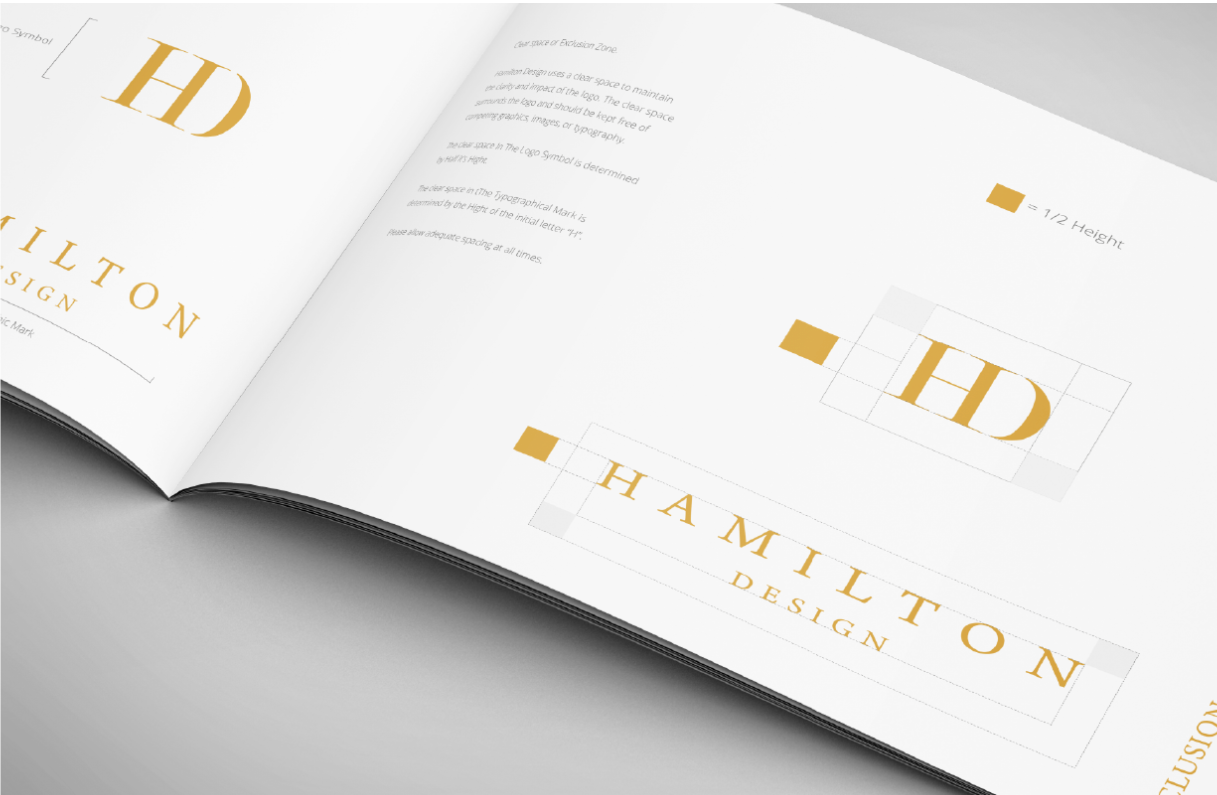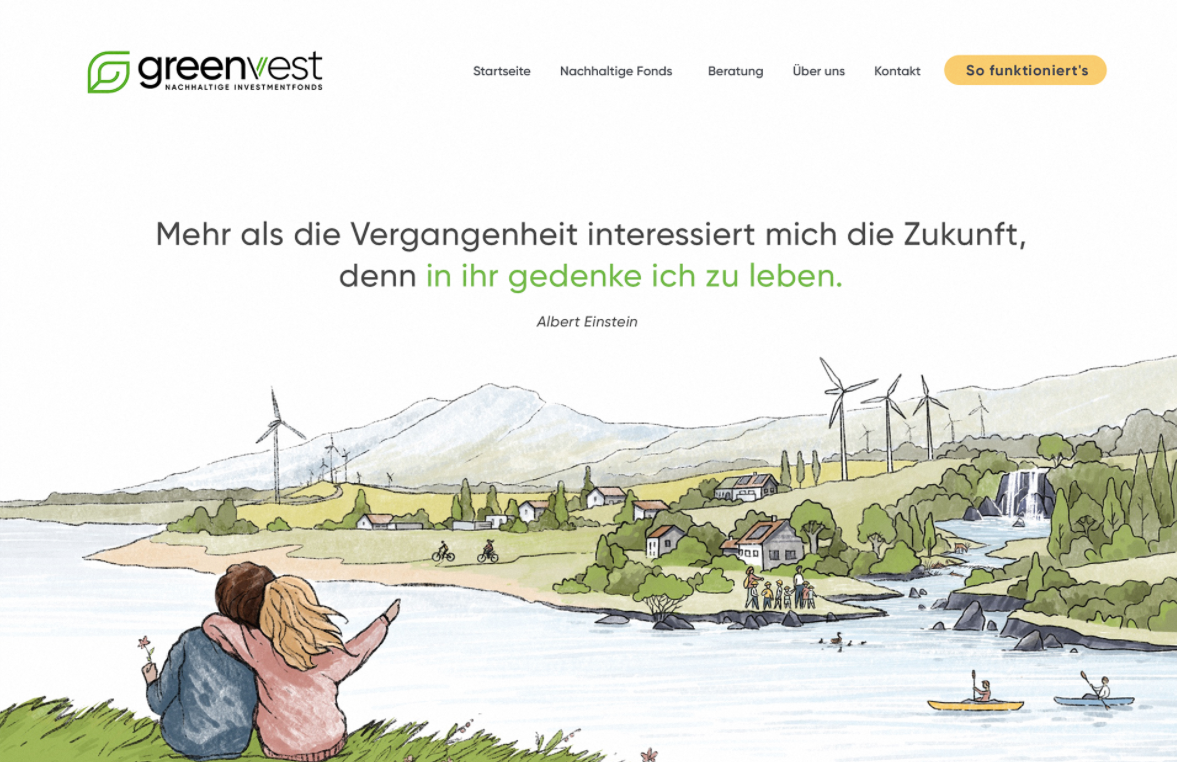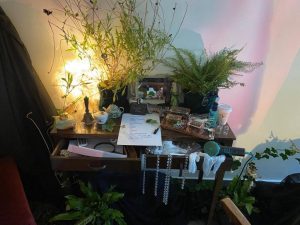Looking for a role that combines artistic sensibilities, a creative vision and solid leadership and management skills? You might find that the creative director role does just that. So what is a creative director? And what does a creative director do?
A creative director is someone who sets the tone or the trajectory for a project and manages the execution of the project and delivers all creative assets. They lead a group of designers, copywriters, photographers, account managers (and more) in the planning, creation and delivery of a given project for a client. Simply put, they are directors of the creative department for an agency or a project.
If that sounds like a lot or if it’s even cryptic, don’t be alarmed! We will dive deep into what a creative director does, what skills and responsibilities they have and how they might help you.

The responsibilities of a creative director
—
So, what does a creative director do? The day-to-day tasks and responsibilities of a creative director include supervising a team of creatives, reviewing and approving presentations and deliverables, media planning and more. These general tasks become a lot more specific depending on the specific project, the client and whether the creative director belongs to an agency, is in-house, or works independently.

To understand how creative directors balance leadership with creativity, we can take a look at some of their most important responsibilities. Creative directors set the creative outlook for the project, brand or agency and make sure this comes through across all of the deliverable creative assets, which can include website, social posts, packaging, press releases and more.
Not just that, they also have to keep tabs on progress made by various teams to make sure they are working well and staying within budget (as much as possible). The creative director is someone who fosters, celebrates and inspires creative thinking and output while adhering to commercial realities and protecting the clients’ interests.

Although there can be slight variations in the day-to-day, the main duties of a creative director are pretty universal. Here are some of the things that a creative director does:
- Building a creative team and a work environment that nourishes the team’s creativity;
- Setting a creative vision and ensuring that all creative output is aligned;
- Holding and directing brainstorming sessions and transforming the ideas into feasible, actionable items;
- Managing the daily workflow by giving out assignments and making sure that deadlines are met;
- Prioritizing work and resources per the timeline and budget;
- Keeping up with trends, new data and industry news;
- Addressing concerns, issues or requests raised by the client, while representing the creative team and their efforts;
- Reviewing and approving all creative output and deliverables (such as advertisements, products, events, or logos) before they are shared or presented;
- Pitching new concepts and ideas to new or existing clients.
There are many other examples, but this should give you a glimpse into a creative director’s job description.
The role of a creative director
—
As you may have noticed from some of the responsibilities above, the creative director does so much more than being present from concept to completion. They are also responsible for the entire creative existence of the creative team and beyond. Creative directors are meant to meet the needs and expectations of the client while inspiring everyone involved in a project in order to create things that aren’t like the ordinary.
They are the main point of contact between the creative team and the client. They are responsible for evolving and meeting their agenda, and this includes all the practical responsibilities that come with it. Often times the balancing act required of a creative director is to meet client expectations with creative solutions.

At an agency or in-house creative team, a creative director leads the creative vision and assets for all projects and clients. They are also responsible for reporting on the team’s efforts to the HR department and senior leadership, such as the chief creative officers, or business owners. Not only are they in a leadership role, but they are also the point person for any questions that may arise about things like artwork files, brand guidelines and messaging.
Essential skills for a creative director
—
What are some of the must-have design skills of a creative director? As the leader of a team of a variety of creatives, the creative director needs to have the essential skills used by their team and knowledge of a whole lot more.

The skill sets of creative directors will slightly vary based on their specialty areas but, essentially, they all need deep knowledge (and sometimes mastery) in these areas:
- A basic understanding of digital design, mainly web design and development
- Knowledge of graphic design basics and how to use programs such as Photoshop, Indesign, Illustrator
- Working knowledge of brand design—logo, packaging, color palette, typography and more
- Sketching and drawing
- Compositions in photography and layouts
- Writing, to be a clear communicator and to have a grasp of various writing styles
In addition to all of these essential skills, it’s good to have knowledge of cinematography techniques, color theory, art history, film history, design trends, pop culture and counterculture, and current events. It can help ensure designs are creative, on-trend and work well.
Some roles may not end up utilizing all these skills directly but as the creative lead, it’s really useful for a creative director to have all of these under their belt. This is to ensure that whoever has the role not only fully understands what’s being presented to them but can give proper feedback and help further develop concepts their team is working on.
Soft skills for a creative director
—
As is clear from what we have covered until now, creative directors must have solid leadership, communication and management skills. Being an excellent designer on its own is by no means enough. A creative director has to be a clear and effective public speaker and a communicator, an artistic pragmatist and a great project manager.

The best creative directors are ones who have achieved the perfect equilibrium between creativity without bounds and practical boundaries. They also have to be great multitaskers in order to manage all facets of (sometimes several) projects simultaneously.
Successful creative directors have many of the following soft skills:
- leadership
- effortless communication attuned to clients, creative department members and senior leadership
- project management
- multitasking
- feedback management
- budgeting and financial management
- artistry and creativity
- negotiation
- presentation skills
- coaching
- diplomacy
- collaboration
Trusting expertise
—
The creative director performs the crucial role of balancing creative possibilities with practical limitations. They lead and work with all of the creative teams and the client to make things happen. It really is a juggling act of fostering magical potentials and then meeting those with deadlines and a budget.
The goal of a creative director is to deliver high-quality work while being the liaison between client and team. Doing this is no small feat. That’s why creative directors are experts of creativity and excellent leaders. They are generally people who have been in their industries and have already taken on leadership roles for several years. A great creative director will be able to answer to a wide array of responsibilities and lead projects with expertise.



